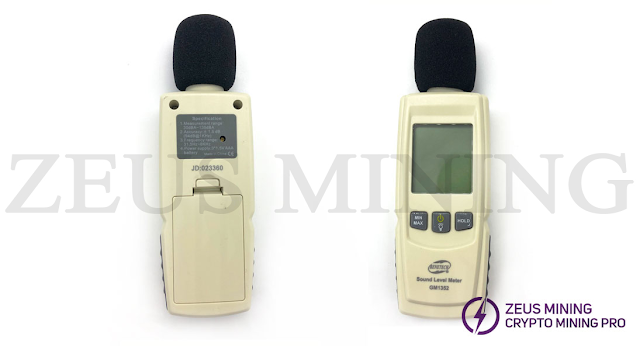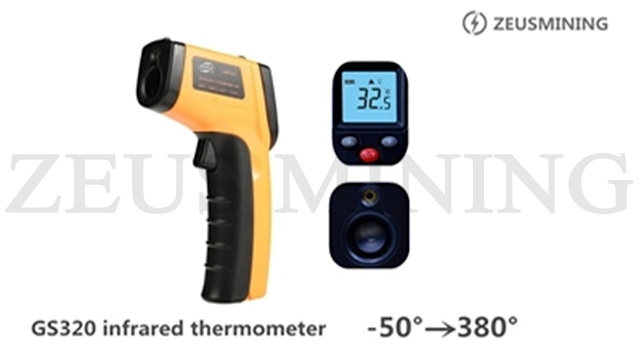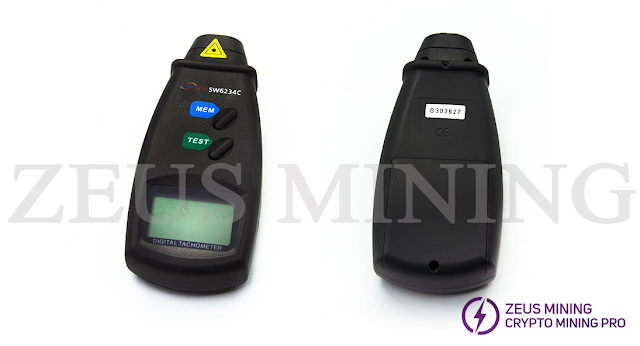ASIC Miner ICERIVER KAS KS0 Profitability In the realm of cryptocurrency mining, the Iceriver KAS KS0 miner has garnered widespread attention. Tailored specifically for the Kaspa network's KHeavyHash algorithm, it boasts high hashing power and low power consumption, making it an ideal choice for many miners. In this article, we will comprehensively assess IceRiver KS0 profitability while considering the Kaspa market conditions and the attributes of KS0 miner. Kaspa Market Dynamics Kaspa is a vibrant cryptocurrency network aimed at delivering high performance and scalability for everyday transactions. At the time of writing this article, the Kaspa coin trades at approximately $0.04959. But it's essential to note that cryptocurrency markets are highly susceptible to price volatility. Hence, investors must remain vigilant about market dynamics. Additionally, the Kaspa network's mining difficulty and reward mechanisms play a role in mining returns. Attributes of the IceRiver KS...
Several types of performance testing tools are commonly used in mining farms
There are many performance testing tools commonly used in mining farms. For the mining farm operation and maintenance personnel, some conventional testing tools are indispensable, such as multimeters, infrared thermometers, laser tachometers, decibel meters, etc., while helping us operate better and maintain the mining farm timely find out the deficiencies in the operation of miners. Next, we will focus on the features and usage of these tools.
The Fluke multimeter consists of three main parts: the meter head, the measuring circuit, and the transfer switch. Compared with analog instruments, digital instruments have high sensitivity, high accuracy, clear display, strong overload capacity, easy to carry, and more convenient and straightforward to use.
1. Multimeter
A multimeter, also known as a multiplexer, a three-meter, etc., is a magnetoelectric instrument with a rectifier that can measure various electrical parameters such as AC and DC, voltage, and resistance. It is indispensable for maintenance personnel such as power electronics. It is also a measuring instrument that integrates a voltmeter, an ammeter, and an ohmmeter.The Fluke multimeter consists of three main parts: the meter head, the measuring circuit, and the transfer switch. Compared with analog instruments, digital instruments have high sensitivity, high accuracy, clear display, strong overload capacity, easy to carry, and more convenient and straightforward to use.
The basic principle of the Fluke multimeter is to use a sensitive magnetoelectric DC ammeter as the head. When a tiny current passes through the meter, the instrument panel will display the current. However, the meter head cannot pass a large current, so some resistors must be connected in parallel or in series on the meter head to shunt or reduce the voltage to measure the resistance value in the circuit.
How to use a multimeter?
1) Mechanical zero adjustment is required before measurement;
2) Select the appropriate range, first select the large range, then select the small range or look at the nameplate value for estimation;
3) When the minimum range measurement is used and the reading is not apparent, the wire under test can be wound a few turns;
4) When measuring, the conductor under test should be in the center of the jaws, and the jaws should be closed tightly to reduce errors;
5) After the measurement, put the switch in the most range.
1) Mechanical zero adjustment is required before measurement;
2) Select the appropriate range, first select the large range, then select the small range or look at the nameplate value for estimation;
3) When the minimum range measurement is used and the reading is not apparent, the wire under test can be wound a few turns;
4) When measuring, the conductor under test should be in the center of the jaws, and the jaws should be closed tightly to reduce errors;
5) After the measurement, put the switch in the most range.
2. Infrared thermometer
GS320 infrared thermometer is a non-human infrared thermometer that belongs to high-precision industrial, electronic, and other industrial thermometers. It has functions such as laser aiming, backlight display, and automatic reading lock. It can be widely used in temperature measurement in mining farms.Features of GS320 infrared thermometer:
1) Non-contact measurement: The required data can be measured without touching the interior or surface of the measured temperature field.
2) Wide measurement range: generally -50 to 360 ℃ can be measured.
3) The temperature measurement speed is fast: the response time is fast, and the temperature can be fixed in as long as 0.5s.
4) High accuracy: infrared temperature measurement will not destroy the temperature distribution of the object itself like contact temperature measurement, and the accuracy is usually within 1 degree.
5) High sensitivity: as long as a slight change in the object's temperature, the radiation energy will change significantly, which is easy to measure. Safe to use and long service life.
How to use an infrared thermometer?
The infrared thermometer measures the object's surface temperature, and its light sensor radiates, reflects, and transmits energy; then, the energy is collected and focused by the probe, and then the received information is converted into reading through the circuit, and finally displayed on the machine. The laser light equipped with this machine is more effective in aligning the measured object and improving the measurement accuracy. In addition, since loose connectors and combinations can generate heat, infrared thermometers can help identify insulation failures in circuit breakers or monitor mining rig failures due to high temperatures.
The principle of the tachometer is straightforward, that is, a sensor that converts the rotational speed of a rotating object into power output. For example, in the mining farm, the laser tachometer is mainly used to detect the speed of the miner's fan. Comparing the measured fan speed with the standard speed can determine whether the fan is faulty.
How to use a laser tachometer?
1) Non-contact measurement: The required data can be measured without touching the interior or surface of the measured temperature field.
2) Wide measurement range: generally -50 to 360 ℃ can be measured.
3) The temperature measurement speed is fast: the response time is fast, and the temperature can be fixed in as long as 0.5s.
4) High accuracy: infrared temperature measurement will not destroy the temperature distribution of the object itself like contact temperature measurement, and the accuracy is usually within 1 degree.
5) High sensitivity: as long as a slight change in the object's temperature, the radiation energy will change significantly, which is easy to measure. Safe to use and long service life.
How to use an infrared thermometer?
The infrared thermometer measures the object's surface temperature, and its light sensor radiates, reflects, and transmits energy; then, the energy is collected and focused by the probe, and then the received information is converted into reading through the circuit, and finally displayed on the machine. The laser light equipped with this machine is more effective in aligning the measured object and improving the measurement accuracy. In addition, since loose connectors and combinations can generate heat, infrared thermometers can help identify insulation failures in circuit breakers or monitor mining rig failures due to high temperatures.
3. Laser tachometer
Tachometers have been used for a long time. It is almost everywhere in industrial production; as long as there is rotation, the tachometer is almost indispensable.The principle of the tachometer is straightforward, that is, a sensor that converts the rotational speed of a rotating object into power output. For example, in the mining farm, the laser tachometer is mainly used to detect the speed of the miner's fan. Comparing the measured fan speed with the standard speed can determine whether the fan is faulty.
How to use a laser tachometer?
SW-6234C laser tachometer, as a non-contact tachometer, adopts the principle of laser reflection to obtain the signal of rotor rotation to measure the rotation speed of the rotor with an automatic storage memory function. After the measurement, the maximum, minimum and last values of the measurement are automatically stored in the meter. When viewing, press the memory key, and the measured value will be displayed on the large high-definition screen. The readings are precise. When the battery voltage is lower than 4V, a battery symbol will appear on the left side of the display, indicating that the voltage is too low and the battery needs to be replaced.

4. Decibel meter
The decibel meter is also called a sound level meter and a noise meter. The decibel meter is the most basic mining farm noise measurement instrument. When converting the sound signal into an electrical signal, it can simulate the time characteristics of the human ear's response speed to sound waves: frequency characteristics with different sensitivities to high and low frequencies and frequency characteristics that change with different loudness strength properties.
Features of the GM1352 decibel meter:
Novel and compact appearance; portable appearance, looks like a microphone.
Multi-function measurement; wide measurement range of 30~130dB, accuracy up to 1.5dB.
Automatic shutdown, LCD backlight alarm, low battery indicator.
1.5V AAA battery power supply, easy to replace the battery.
The large screen is clear; the handwriting is clear without ghosting and easy to read.
Broad uses: suitable for offices, traffic routes, homes, schools, audio equipment, and other places.
How does a decibel meter work?
The decibel meter converts the sound into an electrical signal, and then the preamplifier transforms the impedance. Next, the amplifier adds the output signal to the weighting network and performs frequency weighting on the signal (or an external filter). Finally, the signal is amplified to a certain amplitude by the attenuator and amplifier and sent to the practical value detector. Then the display shows the value of the noise level.
A decibel meter is a device that converts a sound pressure signal into a voltage signal, also known as a microphone. It is a portable digital noise meter with a novel appearance, small and portable, and far away from noise pollution.
There are many testing tools, but each has its advantages and disadvantages. Therefore, it is recommended that you explore the use of other testing tools on the premise of being proficient in one of the testing tools.
Novel and compact appearance; portable appearance, looks like a microphone.
Multi-function measurement; wide measurement range of 30~130dB, accuracy up to 1.5dB.
Automatic shutdown, LCD backlight alarm, low battery indicator.
1.5V AAA battery power supply, easy to replace the battery.
The large screen is clear; the handwriting is clear without ghosting and easy to read.
Broad uses: suitable for offices, traffic routes, homes, schools, audio equipment, and other places.
How does a decibel meter work?
The decibel meter converts the sound into an electrical signal, and then the preamplifier transforms the impedance. Next, the amplifier adds the output signal to the weighting network and performs frequency weighting on the signal (or an external filter). Finally, the signal is amplified to a certain amplitude by the attenuator and amplifier and sent to the practical value detector. Then the display shows the value of the noise level.
A decibel meter is a device that converts a sound pressure signal into a voltage signal, also known as a microphone. It is a portable digital noise meter with a novel appearance, small and portable, and far away from noise pollution.
There are many testing tools, but each has its advantages and disadvantages. Therefore, it is recommended that you explore the use of other testing tools on the premise of being proficient in one of the testing tools.



Comments
Post a Comment
Tell us your opinion